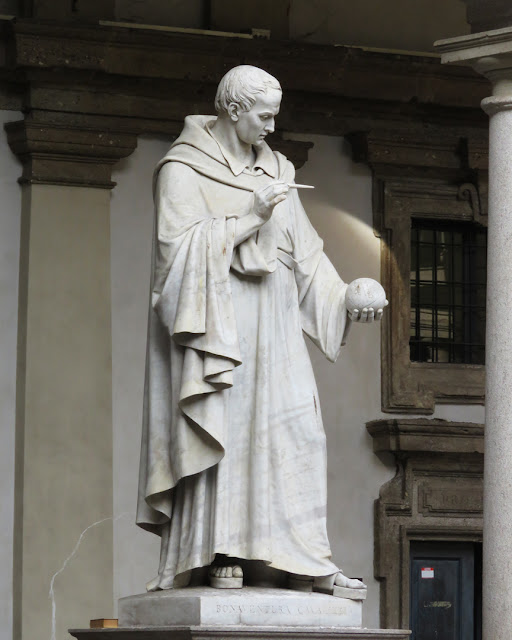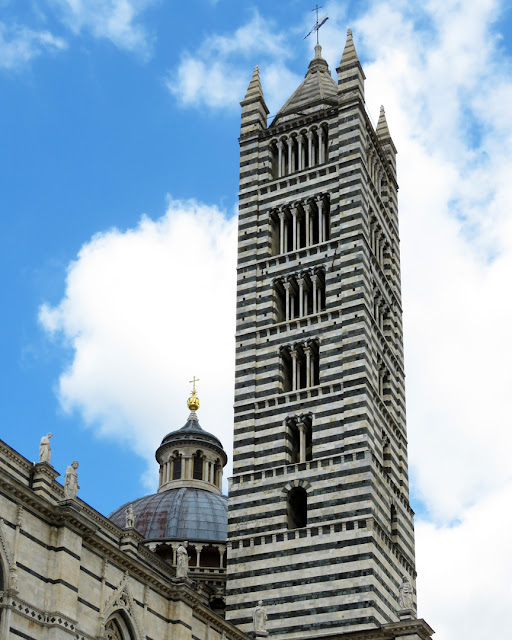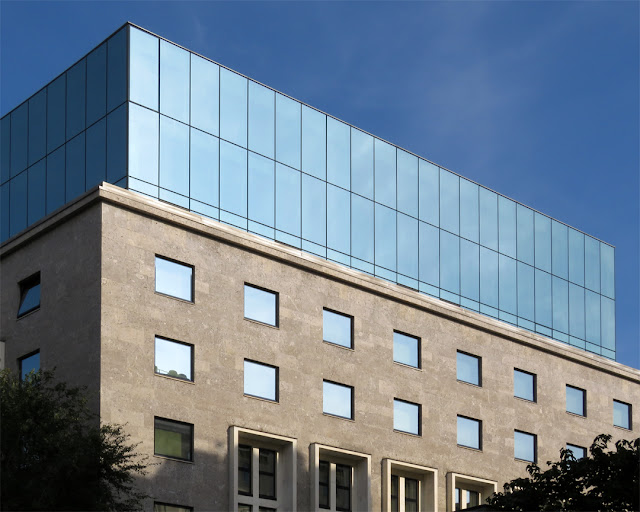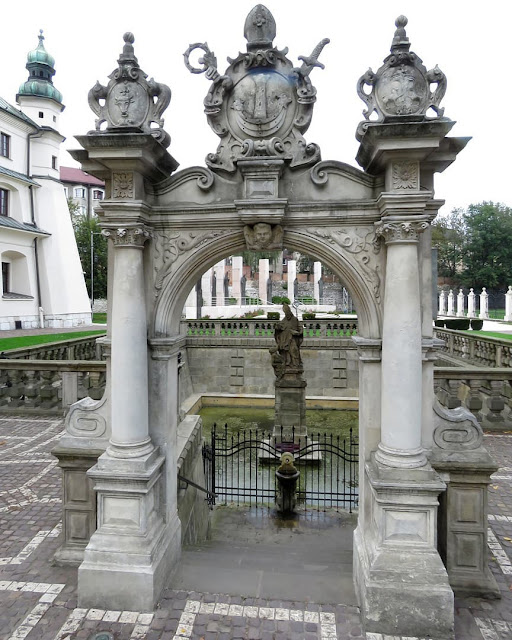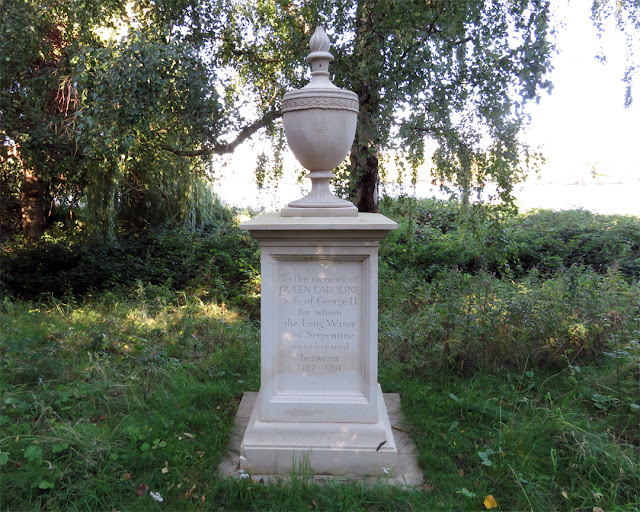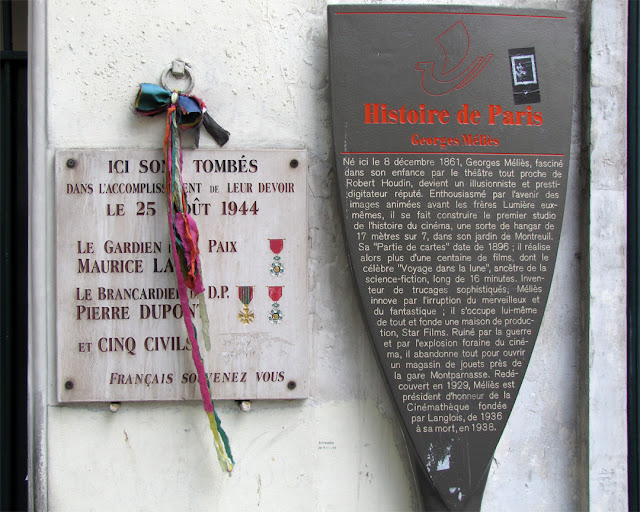Friday, November 30, 2018
Palmenhaus
Palmenhaus (Palm House)
Schönbrunn Palace gardens
Schönbrunner Schloßstraße
Vienna, June 2018
“In order to accommodate the imperial family’s extensive botanical collections, the Dutch Botanical Garden with its hothouses established by Franz Stephan in 1753 was expanded with a further hothouse sited near the present-day Botanic Garden. Franz Stephan’s Dutch Botanical Garden was later cleared when the monumental glass construction of the Great Palm House was erected from 1880 to 1882. The gardens surrounding it were also landscaped at the same time. Not far away, erected in 1904 as the last building to be commissioned by the imperial family, is the Sundial House, which was originally intended to house the so-called New Holland Collection and which today – renamed as the Desert House – contains various examples from the valuable collection of succulents.” (Gardens, Schönbrunn Palace)
Thursday, November 29, 2018
All Hallows Staining
All Hallows Staining
Star Alley
City of London
London, September 2015
“All Hallows Staining was a Church of England church located at the junction of Mark Lane and Dunster Court in the north-eastern corner of Langbourn ward in the City of London, England, close to Fenchurch Street railway station. All that remains of the church is the tower, built around AD 1320 as part of the second church on the site. Use of the grounds around the church is the subject of the Allhallows Staining Church Act 2010.” (All Hallows Staining, Wikipedia)
Wednesday, November 28, 2018
Bonaventura Cavalieri
Monument to Bonaventura Cavalieri by Giovanni Antonio Labus, 1844
Courtyard of Palazzo Brera
Via Brera
Milan, November 2016
Tuesday, November 27, 2018
Długie Pobrzeże
Długie Pobrzeże (Long Embankment) and the Motława seen from Zielony Most
Stare Miasto (Old Town)
Gdańsk, September 2018
“Gdańsk lies at the mouth of the Motława River, connected to the Leniwka, a branch in the delta of the nearby Vistula River, which drains 60 percent of Poland and connects Gdańsk with the Polish capital, Warsaw. Together with the nearby port of Gdynia, Gdańsk is also a notable industrial center. In the late Middle Ages it was an important seaport and shipbuilding town and, in the 14th and 15th centuries, a member of the Hanseatic League.” (Gdańsk, Wikipedia)
Monday, November 26, 2018
Philippe Pinel
Monument to Philippe Pinel by Ludovic Durand, 1879
Square Marie-Curie, boulevard de l'Hôpital
Quartier de la Salpêtrière, 13th arrondissement
Paris, July 2005
“Philippe Pinel (1745–1826) was a French physician who was instrumental in the development of a more humane psychological approach to the custody and care of psychiatric patients, referred to today as moral therapy. He also made notable contributions to the classification of mental disorders and has been described by some as ‘the father of modern psychiatry’. An 1809 description of a case that Pinel recorded in the second edition of a textbook on insanity is regarded as the earliest evidence for the existence of the form of mental disorder known as dementia praecox or schizophrenia in the 20th century by some although Kraeplin is accredited with its first conceptualisation.” (Philippe Pinel, Wikipedia)
Sunday, November 25, 2018
Saturday, November 24, 2018
Hard Rock Cafe
Hard Rock Cafe
Złote Tarasy
ul. Złota
Warsaw, September 2018
“If you’re looking for a big, fast and cheap American-style breakfast, none rocks harder than this global legend. Their special breakfast menu features omelettes, eggs, quesadillas, juices, coffee etc. They also offer a ‘huge, fresh sandwich’ for only 13zł, any breakfast choices along with a coffee will be 16zł.” (Hard Rock Cafe, Warsaw in Your Pocket)
Friday, November 23, 2018
Thursday, November 22, 2018
Wednesday, November 21, 2018
God the father - Arise
“God the father - Arise” by Stanislaw Wyspianski, 1904
Church of St. Francis of Assisi
Plac Wszystkich Świętych
Stare Miasto (Old Town)
Kraków, September 2018
“‘God the father - Arise’ is a stained glass window by Stanislaw Wyspianski in the Church of St. Francis of Assisi in Kraków, Poland. From about 1904, the work has bright modern motifs, geometric and natural shapes, heraldic elements.” (God the Father, Wikipedia)
Tuesday, November 20, 2018
Kiosque à musique
Kiosque à musique (Bandstand)
Boulevard Richard-Lenoir
Quartier de la Folie-Méricourt, 11th arrondissement
Paris, July 2012
Monday, November 19, 2018
Sunday, November 18, 2018
Johann-Strauss-Denkmal
Johann-Strauss-Denkmal (Johann Strauss monument), 1921
Stadtpark (City Park)
Parkring
Vienna, June 2018
“The locals call Johann Strauss Jr. (1825 – 1899) the Walzerkönig (King of the Waltz), which is a clue to some of his more famous works. This is the man who gave us the ‘Blue Danube’ waltz... perhaps the composition most closely associated with Vienna and also the music used to welcome in the Viennese New Year and end the New Year's Concert. Anyway, in 1903, a few years after Strauss's death, plans were in place to build a memorial to this Viennese great. Unfortunately, the financing turned out to be trickier than was hoped and the outbreak of the first World War didn't help matters either. The resulting delays meant the memorial first saw the light of day in 1921, based on a design by Edmund Hellmer. The ‘gold’ statue is actually gilded bronze, and early damage saw removal of the gold decoration in 1935. It returned in 1991 following restoration work.” (The golden Strauss memorial, Visiting Vienna)
Saturday, November 17, 2018
Corinthia Hotel London
Corinthia Hotel London
Whitehall Place
Westminster
London, September 2015
“The Corinthia Hotel London, at the corner of Northumberland Avenue and Whitehall Place in central London, is a hotel and former British Government building, located on a triangular site between Trafalgar Square and the Thames Embankment. Originally built as the Metropole Hotel, its location close to the Palace of Westminster and government offices in Whitehall meant it was commandeered in both world wars. After the Second World War, it was purchased by the Ministry of Defence and used as government offices until it was declared surplus to requirements and sold by Crown Estates in 2007. It was then restored as a hotel and renamed the Corinthia Hotel, a combination of hotel and residential building.” (Corinthia Hotel London, Wikipedia)
Friday, November 16, 2018
Luigi Cagnola
Monument to Luigi Cagnola by Benedetto Cacciatori, 1849
Courtyard of Palazzo Brera
Via Brera
Milan, November 2016
Thursday, November 15, 2018
Krzywy Domek
Krzywy Domek (Crooked Little House), 2004
Bohaterów Monte Cassino
Sopot, September 2018
“Krzywy Domek is an unusually shaped building in Sopot, Poland. Krzywy Domek was built in 2004. It is about 4,000 square meters (43,000 sq ft) in size and is part of the Rezydent shopping center. It was designed by Szotyńscy & Zaleski, who were inspired by the fairytale illustrations and drawings of Jan Marcin Szancer and Per Dahlberg. It can be entered from either Monte Cassino or Morska Streets." (Krzywy Domek, Wikipedia)
Wednesday, November 14, 2018
Sten Lex
A work by Sten & Lex
Rue Oberkampf
Quartier de la Folie-Méricourt, 11th arrondissement
Paris, July 2012
“Sten (born 1982, Rome) and Lex (born 1982, Taranto), known as Sten & Lex, are two Italian street artists. Sten & Lex have been doing stencils on the street since 2000/2001 and today their work is part of the urban landscape in London, Paris, Barcelona, New York City, and in their home town of Rome. During that early period in Rome, and Italy in general, there wasn't a strong stencil culture such as there was in France, and Sten & Lex are seen by many as the pioneers of "Stencil Graffiti" in Italy and were the first to be considered "stencil artists". All the work of Sten & Lex results from an individual path that developed far from art academies and design institutes and far from a classic writing and graffiti background. The duo are best known in the history of stencil-making for introducing the halftone stencil technique, in which the greater part of their stencil portraits is composed of thousands of lines. They usually produce portraits of anonymous people they have photographed themselves or found in family photos album.” (Sten Lex, Wikipedia)
Tuesday, November 13, 2018
Clock by Bartolomeo Guidi
Clock by Bartolomeo Guidi, 1360
Torre del Mangia
Piazza del Campo
Siena, April 2017
“The clock on the lower part of the shaft was added in 1360. There are three bells, the largest one is called the ‘Sunto’ - an abbreviation of assunto, a reference to the assumption of the Virgin. The bell plays a notable role in the celebrations of the Palio.” (Torre del Mangia, Wikipedia)
Monday, November 12, 2018
Złota 44 and InterContinental Warsaw
Złota 44 and InterContinental Warsaw
ulica Emilii Plater
Warsaw, September 2018
“Złota 44 is a residential skyscraper (192 meters high, 52 story) in central Warsaw, Poland. It was designed by Polish-American architect Daniel Libeskind in association with Polish architects Architecture. It has been developed by US real estate investment manager Amstar and Warsaw developer BBI Development, which bought the topped-out but unfinished building from its initial developer ORCO.” (Złota 44, Wikipedia)
“The building is characterised by its unusual shape and is finished in pea-green tones, like the adjacent Warsaw Financial Center. The building houses 414 rooms of various standards, including the presidential suite, 76 luxury suites with kitchenettes, and has 13 conference rooms. The building also has a ballroom, two bars, two restaurants, an E. Wedel chocolate fountain, sauna, fitness club, spa, and solarium. A modern swimming pool, located on the 43rd and 44th floors (150 meters above the ground) is the highest indoor swimming pool in Europe.” (InterContinental Warsaw, Wikipedia)
Sunday, November 11, 2018
Gift Horse
“Gift Horse” by Hans Haacke, 2015
Fourth plinth
Trafalgar Square
London, September 2015
“Depicts a skeletal, riderless horse. Haacke says the sculpture is a tribute to Scottish economist Adam Smith and English painter George Stubbs. The horse is based on an engraving by Stubbs taken from The Anatomy of the Horse published in 1766. Tied to the horse's front leg is an electronic ribbon displaying live the ticker of the London Stock Exchange, completing the link between power, money and history.” (Fourth plinth, Wikipedia)
Saturday, November 10, 2018
Friday, November 9, 2018
Well of Saint Stanislaus
Well of Saint Stanislaus
Pauline Fathers Monastery, Skałka
Kraków, September 2018
“Outside the church is the Well of Saint Stanislaus. According to legend, this well is where King Bolesław discarded the bishop's dismembered body, which then miraculously reassembled. Water from the well is dispensed from a fountain for pilgrims to drink.” (Skałka, Wikipedia)
Thursday, November 8, 2018
Cadran solaire
Cadran solaire (Sundial) by Daniel Bry, 1986
Jardin Émile-Gallé
Rue Neuve-des-Boulets, Quartier de la Roquette
Quartier Sainte-Marguerite, 11th arrondissement
Paris, July 2006
Wednesday, November 7, 2018
San Cristoforo
Church of San Cristoforo
Piazza Tolomei
Siena, April 2017
“San Cristoforo is a Roman Catholic church located on Piazza Tolomei in the Northern Terzo di Camollia and contrada of Civetta in the city of Siena, region of Tuscany, Italy. Across the piazza from the church is the Palazzo Tolomei, one of the oldest buildings in the city. The Tolomei for many years were associated with the church. The original Romanesque style church with a Latin Cross layout was initially constructed in the 11th to 12th-century. Traces of Romanesque columns remain in the adjacent small cloister. During the 13th century, the cloister would host the council of the nascent Republic of Siena. It is claimed that at this site in 1260, a meeting took place between the Council of 24 and Florentine ambassadors. The latters demanded that Siena breach its walls, and allow Florentine fortresses in each Terzo. These heavy demands forced the former to decide that war with Florence was inevitable, and they dismissed the ambassadors, and prepared for war. They acknowledged the need to hire German mercenaries from Count Giordano d'Anglano, vicar of King Manfred, but lacked the funds. Upon hearing this, Salimbene Salimbeni, banker and founder of an early branch of the future Monte dei Paschi, merely walked to his nearby home, and returned to this cloister with the wheelbarrow full of 118,000 florins. The mercenaries proved essential to the Sienese victory at the Battle of Montaperti. Also at this church, it is said that in 1376, Saint Catherine of Siena was able to force a reconciliation of a bitter feud between the Maconi and Tolomei/Rimaldini families. With the feuding parties present, she entered into a trance like extasis while in prayer at an altar. The church underwent a number of modifications, most prominently after the earthquake of 1798. In 1800, a brick Neoclassical temple facade was added with four columns and tympanum, designed by Tommaso and Francesco Paccagnini. The niches flanking the entrance hold statues (1802) of Saint Bernardo Tolomei and the Blessed Nera Tolomei, works by Giuseppe Silini.” (San Cristoforo, Wikipedia)
Tuesday, November 6, 2018
St. Nicholas Cathedral
St. Nicholas Cathedral
Jauresgasse
Vienna, June 2018
“St. Stephen’s Cathedral is probably the most famous building in Vienna. But few people know that it is not the only cathedral in town. Take the splendid Russian Orthodox St. Nicholas Cathedral, for example. It is located in the third district of Vienna, in the heart of the city’s diplomatic quarter. It was built between 1893 and 1899 according to the plans of Russian architect Grigory Ivanovich Kotov right next to the Russian embassy. The costs were largely paid by none other than Tsar Alexander III. However, after the Russian Orthodox community, which had long been present in Vienna, finally had its own church, the fate of the building soon took a rather sad turn. When on the eve of the First World War the diplomatic staff of the Russian embassy was withdrawn, the church was closed. In the years that followed it served as a storage room and was temporarily used by the music school of the city. Only after the Second World War the building was returned to its original function. Shortly thereafter in 1962 it became the seat of the bishop of the Eparchy of Vienna, and was thus elevated to the rank of a cathedral. But the turbulent history had left its traces. Roofs and facades were damaged and the building was threatened by moisture. In 2003-2008 the danger was averted by extensive renovation works. On this occasion the artist Archimandrit Zenon created a fresco cycle based on traditional Russian-Byzantine models spanning an overwhelming 1500 square meters, turning the cathedral into one of the most beautiful churches of the city. For the construction of the building, 30 loads of Russian soil were transported to the Austrian capital and served as the subsoil of the cathedral. ” (The Russian orthodox cathedral of Vienna, Secret Vienna)
Monday, November 5, 2018
Queen Caroline Memorial
Queen Caroline Memorial, 1990
Hyde Park
London, September 2015
“In 1730 Queen Caroline, wife of George II, ordered the damming of the River Westbourne in Hyde Park as part of a general redevelopment of Hyde Park and Kensington Gardens. Original monastic ponds may have existed in the location; these were modified as part of the 1730–1732 scheme to create a single lake. At that time, the Westbourne formed eleven natural ponds in the park. During the 1730s, the lake filled to its current size and shape. The redevelopment was carried out by Royal Gardener Charles Bridgeman, who dammed the Westbourne to create the artificial lake, and dug a large pond in the centre of Kensington Gardens (The Round Pond) to be a focal point for pathways in the park. At the time of construction, artificial lakes were typically long and straight. The Serpentine was one of the earliest artificial lakes designed to appear natural, and was widely imitated in parks and gardens nationwide. The lake achieved notoriety in December 1816 when Harriet Westbrook, the pregnant wife of the poet Percy Bysshe Shelley, was found drowned in the Serpentine having left a suicide note addressed to her father, sister and husband.[7] Shelley married Mary Wollstonecraft Godwin less than two weeks later.” (The Long Water, Wikipedia)
Sunday, November 4, 2018
Saturday, November 3, 2018
Muzeum II Wojny Światowej
Muzeum II Wojny Światowej (Museum of the Second World War)
Plac Władysława Bartoszewskiego
Gdańsk, September 2018
“The Museum of the Second World War is a state cultural institution established in 2008 and a museum in Gdańsk, Poland which is devoted to the Second World War. The museum was opened on 23 March 2017. Kwadrat architectural team won the architectural competition for the building of the Museum of the Second World War in Gdańsk." (Museum of the Second World War, Wikipedia)
Friday, November 2, 2018
Georges Méliès
Birthplace of Georges Méliès
Panneau Histoire de Paris (Panel Histoire de Paris)
Boulevard Saint-Martin
Quartier des Arts-et-Métiers, 3rd arrondissement
Paris, July 2010
“Marie-Georges-Jean Méliès (1861 – 1938), was a French illusionist, actor and film director who led many technical and narrative developments in the earliest days of cinema. Méliès was well known for the use of special effects, popularizing such techniques as substitution splices, multiple exposures, time-lapse photography, dissolves, and hand-painted colour. He was also one of the first filmmakers to use storyboards. His films include A Trip to the Moon (1902) and The Impossible Voyage (1904), both involving strange, surreal journeys somewhat in the style of Jules Verne, and are considered among the most important early science fiction films, though their approach is closer to fantasy.” (Georges Méliès, Wikipedia)
Thursday, November 1, 2018
Santa Maria della Scala
Santa Maria della Scala
Piazza del Duomo
Siena, April 2017
“Santa Maria della Scala (also referred to as the Hospital, Ospedale, and Spedale) is located in Siena, Italy. Now a museum, it was once an important civic hospital dedicated to caring for abandoned children, the poor, the sick, and pilgrims. Revenues were earned partially from bequests and donations from the citizens of Siena, particularly the wealthy. The head of the hospital was the rector who managed the lay brothers responsible for its operation. Santa Maria della Scala was one of Europe's first hospitals and is one of the oldest hospitals still surviving in the world. It played a major cultural role and is considered one of Siena's 3 main artistic hubs.” (Siena Cathedral, Wikipedia)
Subscribe to:
Posts (Atom)



